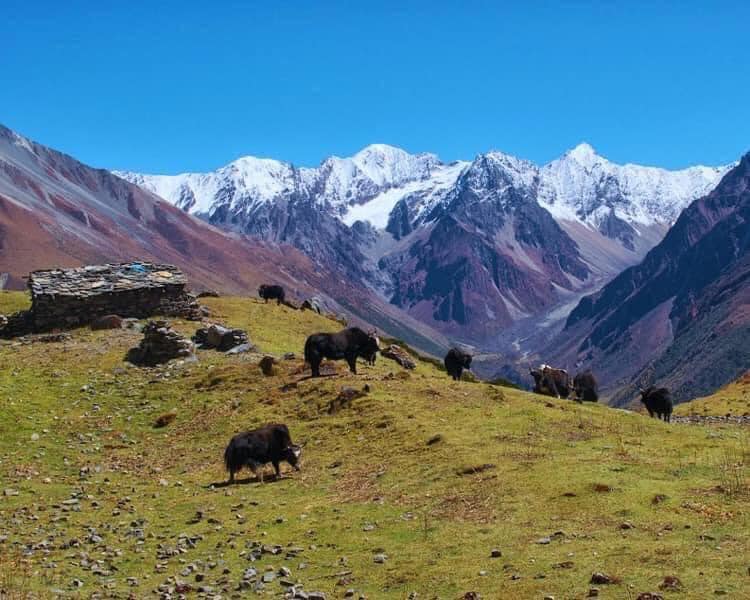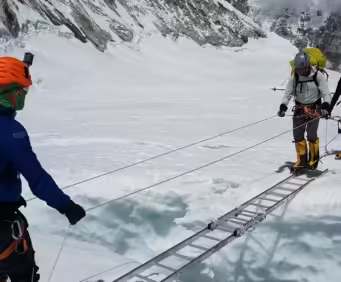
How to reach Tsum Valley from Kathmandu ?
8th September, 2024 - Posted By: Himalayan AbodeIf you want to reach Tsum Valley from Kathmandu, this blog is useful for making your journey smooth and memorable.
Nestled in the northern mid-western part of Gorkha district in Nepal, Tsum Valley is perhaps one of the last remaining unexplored and pristine valleys that hold immense ethnographic and tourism potential of the region, the practitioners of purely Tibetan Buddhism.
It is comparatively newer and slightly less popular than the other trekking areas like the Annapurna and the Everest regions and is waiting to be discovered by people who want to go on a trekking tour and at the same time want to experience a completely different era.
A Sacred Valley
Tsum Valley is a pristine Himalayan Buddhist pilgrimage valley popularly referred to as the ‘Tsang –Chhu’ or ‘The Valley of Happiness’. It was once culturally a different area, known to the Europeans as ‘Tsum Tso Chuksums’, the thirteen provinces of the wed block in northwestern China formerly united as one territory. The valley has religious importance for practicing Tibetan Buddhism since it is one of the places where Milarepa – the great Buddhist saint of Tibet meditated in caves.
The place has monasteries of sorts, Chortens, mani walls, and prayer wheels all giving an all-round feel of Tibetan Buddhism. The valley was only opened to outsiders in the year 2008 and this is why the area maintains its original practices and systems.
Trekking in Tsum Valley
Over all it could be said that the trekking in Tsum Valley is somehow different from the other trekking regions of Nepal. The trail covers beautiful and thick forests, different terrains of farming lands, and time-preserved village. It starts from Soti Khola in the lower section in the area known as the Terai and slowly and steadily moves up to the valley that stands mesmerizingly amidst the mountains including Ganesh Himal, Sringi Himal, and Boudha Himal ranges.
The journey is characterized by the change in the vegetation whereby as you progress deeper towards the valley the vegetation type is not as green as when you are higher up in the valley though the vegetation type is not as rocky as the next part.
The trek to Tsum Valley normally lasts 14 to 21 days but this depends on the number of days spent enjoying the area. This trek is distinctly different from many of the other treks patronized by tens of thousands of travelers every year, which is again a bonus for the Tsum Valley trek. They are mostly cheap lodging and food and overnight accommodations such as; teahouses and homestays where you get to interact with friendly people.
Cultural Immersion
Another aspect that has to be considered about trekking adventure in Tsum Valley is that you get to experience the true nature of Nepalese culture. Tsumba people who inhabit the valley are of Tibetan origin, and they have remained culturally and socially, perhaps, the most authentic representatives of ancient Tibetan people analogous to those who remained in Tibet.
It also has many monasteries that are hundreds of years old such as Mu Gompa and Rachen nunnery where you get a chance to see monks and nuns choral prayers. This has made it possible for the valley to preserve this culture today with highlighted travelers expressing on the plain and religious nature of life in Tsum Valley.
The Tsumba homes are constructed from stony and wooden and have relatively flat roofs and wooden carved doors and windows. The people still follow Polyandry, which is a very old custom that involves marrying a woman to many brothers of the same family. It is thought that this practice assists in protecting the family’s land and other resources.
Wildlife and Natural Beauty
Tsum Valley is not only culturally diverse but also geographically diverse being endowed with natural features as well as wildlife. The valley is located in the Manaslu Conservation Area which is rich in plant and animal species.
Walking through the area you can meet such animals like Himalayan tahr, blue sheep, and even snow leopards if you are lucky enough. There are equally some plants that are scientifically proven to have healing powers and the people of the valley have also embraced some of these plants in their traditional medicine.

The great rock formations that dominate the area as well as the rich vegetation of the forests, the wonderful waterfalls, and pure rivers make the view splendid. Tsum Valley is also a beautiful place that is located far from the main cities and the terrains are also rough making it the best place for those interested in nature.
Responsible Travel
Currently, Tsum Valley is known or considered to be relatively unknown; thus, travelers need to respect the area. The area is still in its raw stage with the requirements to facilitate the infrastructure put in place and resources are scarce. They have been encouraged to use good practices every time they go for a trek and this comprises of reducing on the waste that they dispose of, observing cultural bear etiquette, and being supportive of the locals.
Tsum Valley trekking area is also a restricted area and as a result, one has to purchase a permit to do the trek. It is also important to get a local guide as he or she has the necessary information regarding the culture and history of the place.
How to reach Tsum Valley from Kathmandu?- Best Itinerary
Tsum Valley is off the reach from Kathmandu, which means it is not easily accessible, what you have to do is to drive and trek. Here’s a step-by-step guide on how to get there:
1. Kathmandu to Soti Khola
Tsum Valley trek begins with a drive to the Soti Khola which is the entrance point to the trek.
Reach Tsum Valley from Kathmandu: By Public Bus or Jeep: By Public Bus or Jeep:
Kathmandu to Arughat: You can hire from a public bus or shared Jeeps from Kathmandu which is 126 km away from Arughat. It takes nearly 7-8 hours and it passes through Dhading and Gorkha districts. Some parts of that road are more gravel and hence bumpy after the district of Dhading sometimes without any pavement at all.
Arughat to Soti Khola: After reaching Arughat you have to hire a local jeep to reach Soti Khola. It takes another 2 to 3 hours lifting, 35 km on rough, off-road track beside the Budhi Gandaki River. This is the point where the actual path and trekking is said to be commence from the long stretch of the road.
By Private Jeep: For those, who wish for comfortable and faster means of transport, one can arrange a private jeep right from Kathmandu to Soti Khola. This is approximately time taken to be 8-9 hours, depending on the traffic that may be encountered on the road. Although considerably more costly than the former, it affords more freedom with regards to the departure time as well as the several points en route.
2. Soti Khola to Machha khola
The Tsum Valley trek starts from Soti Khola for this trek. The first day typically can be regarded as the highest in terms of difficulty and it takes from 6 to 7 hours to reach the point at Soti Khola – Machha Khola. Budi Gandaki River; villages, forest, terrace culture of agriculture, and so on are through which the trail passes.

3. Walking Around the Tsum Valley
Once you reach Machha Khola, the trek continues through the following key stages:
Machha Khola to Jagat: There are river paths along the way as well as suspension bridges at some parts of the trail. During the trek, you will cross through such villages including Khorla Besi and Tatopani which is famous for natural hot springs.
Jagat to Lokpa: From Jagat, you move further into the Manaslu Conservation Area and head to the isolated Tsum Valley. Lokpa is the first village of Tsum Valley and can be reached only after crossing the river Kalgaduda.
Lokpa to Chumling: This segment of the trip makes you feel the soul of the valley since it is the core of Tsum Valley. If you go higher the view of the village improves, then you observe the typical architecture of Tibetan and Yarkandi buildings.
Chumling to Chhokang Paro: This trek goes further on to the Chhokang Paro village where you can get the first glimpse view of the Ganesh Himal.
Chhokang Paro to Nile/Chhule: The farther you get in the valley, in the landscape, it becomes more and more appalling, and the umber of Tibetan touches increases as well.
Nile to Mu Gompa: Tsum Valley trek’s highest point and a religious site is the Mu Gompa. It is one of the oldest and the most significant monasteries of the valley which provides a mesmerizing view of mountains.
4. Returning to Kathmandu
The trek to Tsum Valley ends at Buwo Tar, and stopping at the same places, the trekkers retrace the same route and return to Soti Khola. From there, one can get to Kathmandu either by public buses or jeep but if one insists on a private car, one can always hire one.
Additional Information
- Permits: Tsum Valley is in a restricted zone so one has to get a Special Permit for Trekking in this area. For entering Tsum Valley you will require Tsum Valley Restricted Area Permit and Manaslu Conservation Area Permit (MCAP). These permits must have to be obtained from a registered trekking agency in Kathmandu.
- Guide and Porter: In this case, it is recommended to hire the services of a guide and a porter especially because Lantang is one of the restricted areas and hence requires a licensed guide.
About the above-described steps, you can set out for the fascinating culturally diverse Tsum Valley from Kathmandu.
Recent Posts



